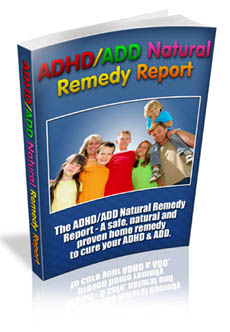How Do You Know When You Have ADD
For children who like to be active, begin by getting active with them and match their rhythm - running, jumping fast, yelling loud, even muttering under your breath or fidgeting when they do. Then get into a kind of dance, making a game out of it, going from the fast movements to the medium-fast ones and then slightly slower, and slightly slower, and slower until you are really in slow motion. All kinds of senses can be involved. Drums can be played from fast to slow to superslow to slow motion, or songs can be sung loud, soft, supersoft, super-supersoft, and bright lights can be dimmed, softer and softer. In all the ways you can imagine, in playing this game, the idea is to go from the 100-mph down to the 1-mph or the 1-foot-per-hour level. You play both the tortoise and the hare together.
By making a game like this, we in essence help children learn to enjoy regulating their own activity level. By recognizing their own patterns and turning their energy into regulating and modulating that activity - not giving up the high activity - they now can get it under conscious control.
A second strategy is to find a structured activity, such as sports, dance, and music, in which a high-level activity is needed at some moments and not others. How Do You Know When You Have ADD
Drumming works better than other musical instruments for very active children because they can move their hands and legs while drumming and hearing the loud noise. They can also accommodate to the rules of drumming as they are doing this. Start off with a gentle touch with freelance drumming and gradually introduce some of the rules that create rhythms. Rhythms can be vigorous at first and then slower and then slower and slower.
Same thing with sports - you can begin by just running around haywire and then around a set of bases and then through different agility drills. A game of catch can just be informal and then follow rules, or be done while balancing on one leg or catching one-handed. You can make these games demanding and challenging while still keeping them fun. Over time (and this may take months or sometimes even years), the highly active, sensory-craving child can become a child who enjoys vigorous sports or dance or active games but can also operate very attentively and with full focus within the rules of those activities.
The Underreactive Child
For the underreactive child, you can begin by energizing up your voice as you gradually woo the child into more and more interaction. You'll need to have an extra-animated and extra-energetic voice to catch their attention. A useful strategy to encourage self-awareness is to pretend to be the one who is self-absorbed and lost in your own world. Let the child draw you out. Children who lapse into creative fantasy can learn to recognize this and become more responsive, paying attention to more signals from others. Such a child will do better with a teacher or instructor or caregiver who can generate a lot of energy of his or her own.
Orchestrating the Senses
In helping children overcome their sensory processing problems, an important goal is to help them use all their senses together - vision, hearing, and touch. We want children to get all the parts of the brain functioning together as a ballet troupe or a basketball team would. Just a game of throwing and catching balls and talking at the same time keeps many parts of the brain and mind working together. When you help an underreactive child learn a new dance step and demonstrate the movements in different areas of the room all while talking about the new step, you are helping him process bodily, visual, and verbal stimuli at the same time.
In summary, to help with processing and the sensory modulation, gradually focus initially on what is comforting and soothing for the child, or what is energizing, or what gives structure to the child's activity. In other words, focus on whatever the child seems to require and then go on to increasing his flexibility to tolerate and enjoy a wider range of stimuli. At the same time help him become aware of this ability so he can take charge of the way he processes sight, sound, movement, and so forth. With these principles in mind, you can help children become the masters of their unique biologies rather than being governed by them. How Do You Know When You Have ADD
Shared Attention and Regulation
A baby's first task in becoming able to focus and attend is to remain calm and regulated and to coordinate sensation with actions. In the early days of life, emotions help infants to bring all of their senses together and integrate them with their motor system. When a one-month-old baby turns to look at her mother to find that wonderful voice saying, "You're my sweetheart," she is coordinating vision, hearing, and action - listening, looking, and searching - guided by her pleasure in hearing this loving voice. This pleasure fuels the baby's first attention to the external world and coordinates her senses with motor actions.
Parents quickly learn how to grab the attention of their baby. For example, if the baby is sensitive to loud sounds, they learn to use a more soothing voice. For an underreactive baby who doesn't register sounds or sights easily, the caregiver will need to use more animation and energy. Some babies respond more to visual cues and others are more sound oriented. To learn more, you can check out How Do You Know When You Have ADD.


